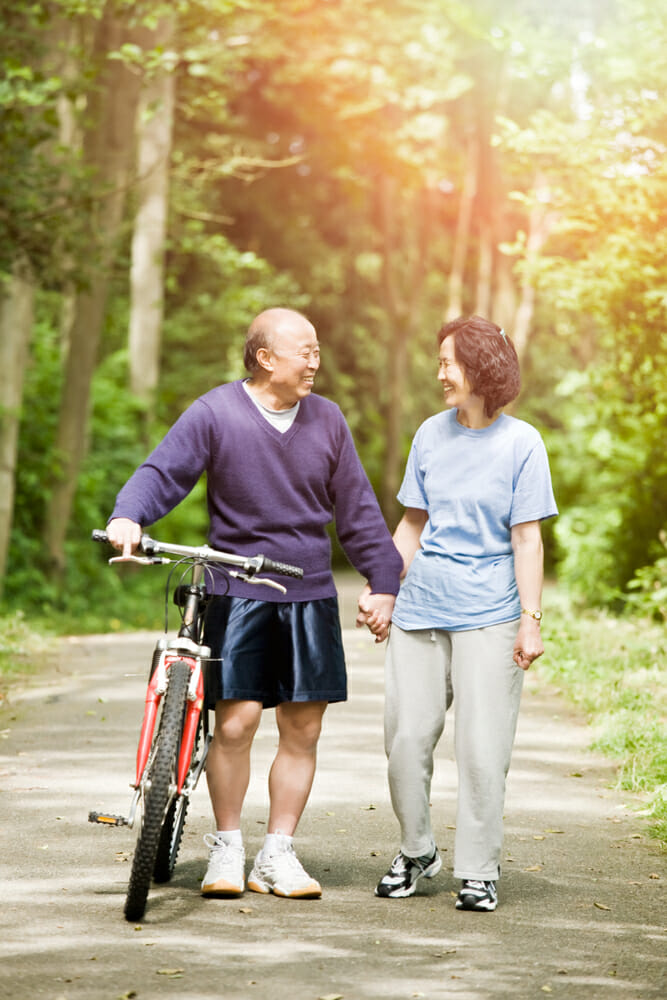If you’ve experienced SAD-ness, you’re not alone. In North America, millions of people will experience some form of Seasonal Affective Disorder throughout their lifetime, with up to 3% of the population in Canada and the United States diagnosed with seasonal depression each year.
Our understanding of seasonal depression is still evolving, but preliminary research shows that it’s most frequently triggered by changes in our exposure to sunlight at the changing of the seasons. Many researchers think this can negatively impact your internal biological clock and the associated neurotransmitters released by the brain, particularly levels of serotonin that help regulate your feelings of happiness, satisfaction, and optimism.
While anyone, anywhere, can experience seasonal depression, it occurs more often in:
- Women between the ages of 18 and 30
- Geographies that are cloudier and farther away from the equator
- Folks with pre-existing mental health conditions
SAD can happen all year long
Seasonal depression is more than the winter blahs. While it’s common for lots of folks to struggle with the lower levels of sunlight, colder temperatures, and other lifestyle adjustments we have to make when winter rolls around, SAD can impact you throughout the year and during the change of all seasons.
- SAD might not be constant. You can experience it some years and seasons but not others.
- Though the transition from warmer, brighter weather to colder, darker days is a significant trigger for SAD for many people, it can be experienced any time of the year whenever our exposure to light changes.
Stress Management

Signs you might be experiencing SAD
It can be tricky to know if you’re feeling a temporary period of blah or might have more severe symptoms of seasonal depression.
Like with any mental health condition, SAD can only be diagnosed by a mental health professional. As a guideline, if you’ve been experiencing many of these symptoms for more than two weeks straight, it could be a good time for you to chat real-time with a registered nurse right from your League app or talk with your healthcare provider about possible treatment.
- Sudden shifts in feelings or mood that you haven’t experienced before
- Difficulty waking up
- Sleep disruptions, including daytime drowsiness and difficulty falling asleep
- Cravings to overeat, especially for carbohydrates
- Social withdrawal
- Loss of interest in activities you used to enjoy
- Loss of sexual interests
- Extreme fatigue and low energy levels
- Thoughts of death or suicide
Let there be light (therapy)
BLTs aren’t just for lunch anymore. Bright Light Therapy (BLT), also known as Blue Light Therapy, is a first-line treatment for SAD. During BLT, you sit or work next to a box or lamp that mimics natural sunlight and stimulates your system to regulate serotonin and balance your circadian rhythm.
BLT is particularly effective in treating SAD, with between 60-80% of people reporting substantial relief from their symptoms.
Talk to your healthcare provider before beginning any type of BLT, but especially if:
- You’ve got any existing conditions that make your skin or eyes sensitive to light.
- You take any medications that make your skin sensitive to light.
- You regularly take the herbal supplement St. John’s Wort.
- You’ve been diagnosed with bipolar disorder. BLT has been shown to trigger mania in some people potentially.
Kala Light Therapy Lamp

More ways to ease seasonal depression
Anything you can do to maximize your exposure to light during the day is a great step. Look at your schedule and habits for ways to prioritize experiencing as much exposure to light as possible:
- Keep curtains and blinds as open as possible during the day.
- Re-arrange your furniture or areas you spend a lot of time in to be as close to windows as you can.
- Trim hedges or trees that might be blocking light from your home.
- If you exercise indoors, try to move your equipment next to a window.
Many other top recommendations for your overall health can also help alleviate the impacts of SAD. You can focus on feeling better while boosting different facets of your wellbeing.
- Add a vitamin D supplement to your regular diet.
- Maintain an exercise routine. If you can get moving outside to expose yourself to as much sunlight as possible, that’s even better. Start this Health Program for an easy-to-follow daily plan to get out of your home for a regular run, walk or roll.
- If it fits your schedule, try getting outside between 11 am to 2 pm when the sun is brightest.
- Avoid alcohol and drug use.
- Be careful with caffeine and artificial stimulants. While they may help temporarily, they can make the symptoms of SAD worse over time.
Daily Mindfulness







